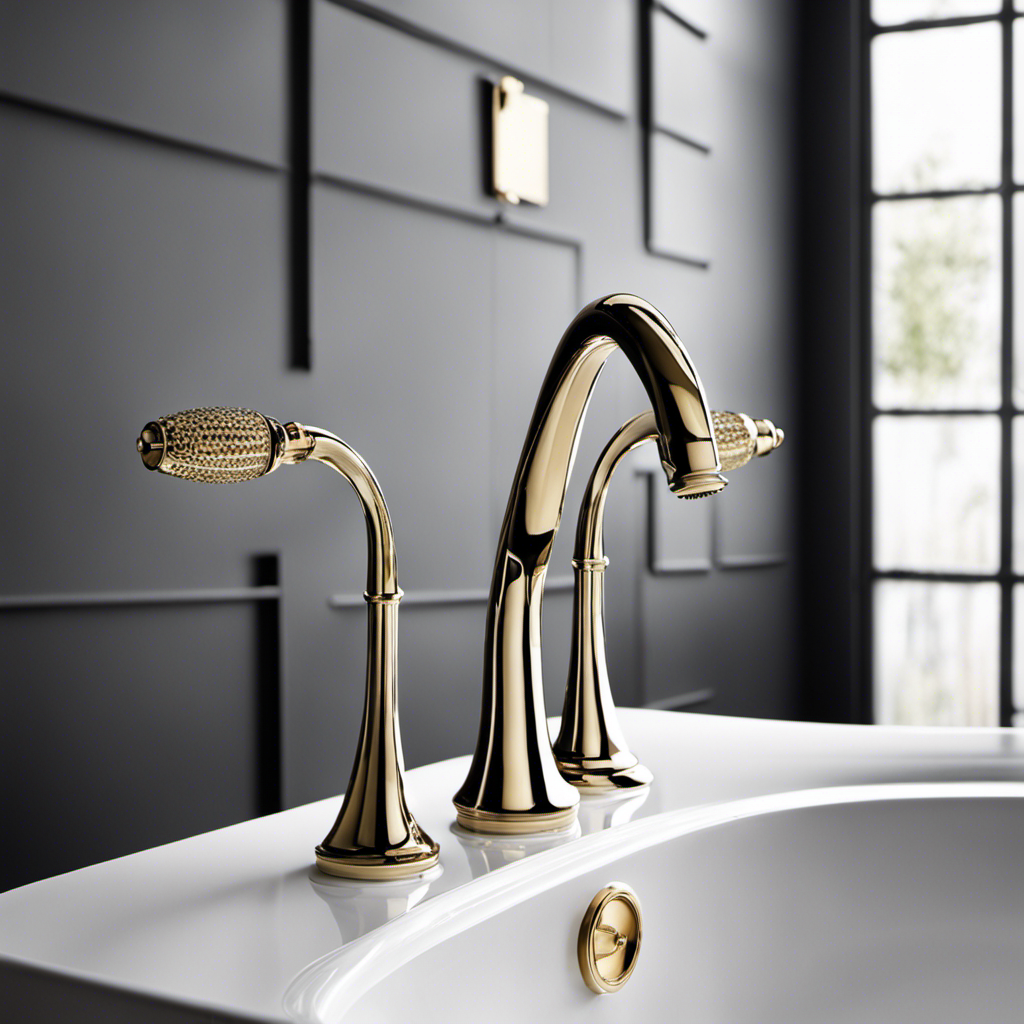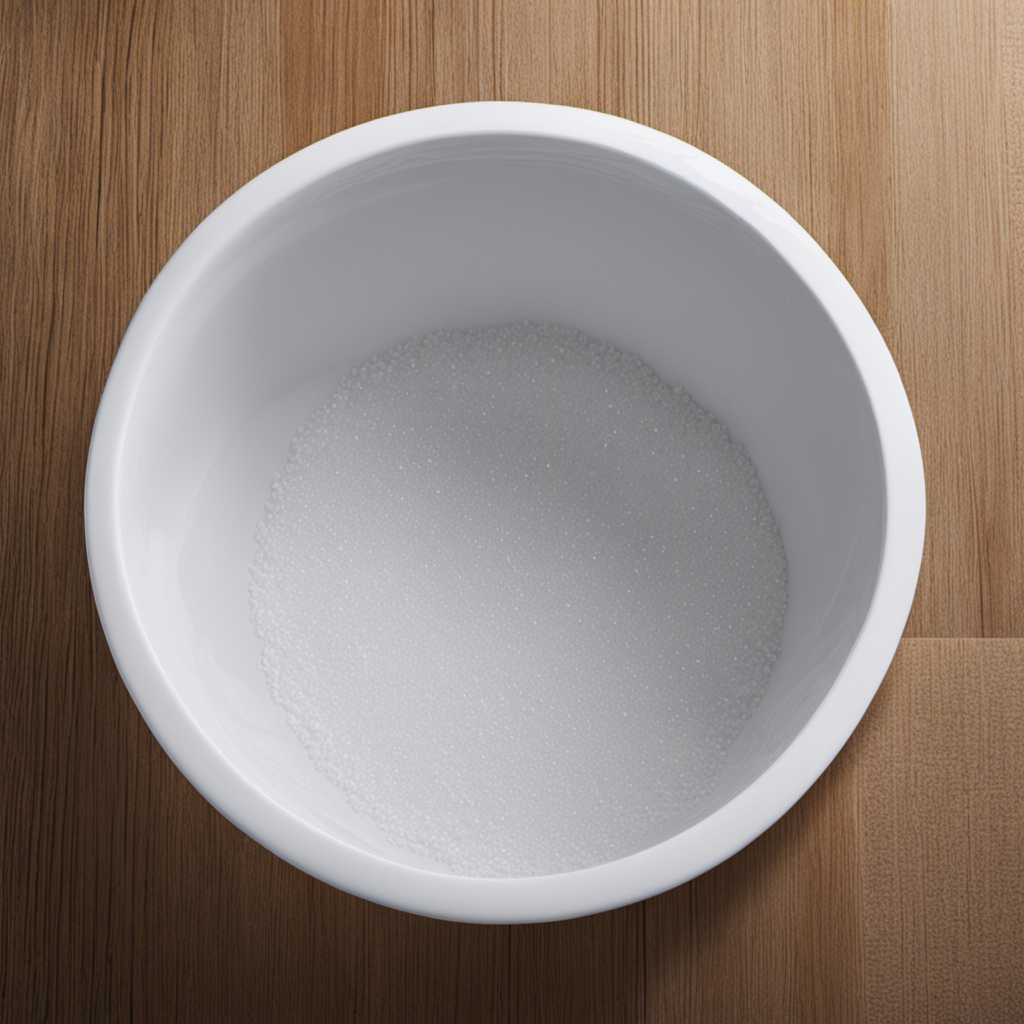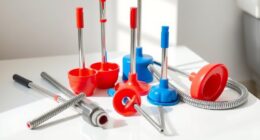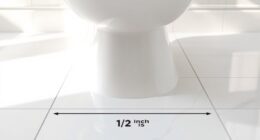Have you ever wondered what all those different parts of a bathtub faucet are called? Well, wonder no more! In this article, I’ll be breaking down the names and functions of each component, so you’ll never be left scratching your head again.
From the spout to the handle, the cartridge to the escutcheon plate, and the diverter, we’ll explore it all.
So, let’s dive in and unravel the mystery behind the anatomy of a bathtub faucet.
Key Takeaways
- The main parts of a bathtub faucet are the bathtub spout, handle, cartridge, escutcheon plate, and diverter.
- The bathtub spout is available in different types and should be chosen based on style, finish, and functionality to complement the bathroom aesthetic.
- The handle controls the flow and temperature of water and comes in various types like knob, lever, and cross handles, each suitable for different styles and designs.
- The cartridge requires regular maintenance and cleaning, and a leaky faucet can be caused by a worn-out cartridge or faulty seal. It should be inspected for damage or wear and replaced if necessary, while lubrication with silicone-based grease ensures smooth operation.
The Spout
The spout is where you’ll find the water flowing out of the faucet. There are several types of bathtub spouts to choose from, depending on your bathroom design.
One common type is the wall-mounted spout, which is attached directly to the wall above the bathtub. Another option is the deck-mounted spout, which is installed on the deck of the bathtub. There are also freestanding spouts that stand independently near the bathtub.
When choosing the right bathtub spout for your bathroom design, consider the style and finish that will complement your overall aesthetic. Additionally, think about the functionality and ease of use.
Once you’ve chosen the perfect spout, it’s time to move on to the next important part of the faucet – the handle.
The Handle
One important component of a bathtub faucet is its handle. The handle allows users to control the flow and temperature of the water. There are different types of bathtub faucet handles, each with its own unique design and functionality.
Knob handle: This type of handle is easy to grip and turn. It usually has a round shape and is commonly found in traditional style faucets.
Lever handle: Lever handles are sleek and modern in design. They offer a smooth operation, allowing users to easily adjust the water flow and temperature.
Cross handle: Cross handles have a cross-like shape and add a touch of elegance to the bathroom. They are usually seen in vintage or classic style faucets.
Touchless handle: This innovative handle utilizes motion-sensing technology to turn the water on and off. It offers a hands-free experience and is ideal for those concerned about hygiene.
To properly maintain and clean bathtub faucet handles, it is important to regularly remove any dirt or grime using a mild soap and water solution. Avoid using abrasive cleaners or scrub brushes that can damage the finish. Additionally, regularly check for any leaks or loose parts and tighten them as needed to ensure proper functionality.
The Cartridge
To properly maintain and clean your cartridge, it’s important to regularly remove any dirt or grime using a mild soap and water solution. Cartridge maintenance is crucial to ensure the smooth operation of your bathtub faucet.
One common cartridge issue is a leaky faucet. This can be caused by a worn-out cartridge or a faulty seal. To troubleshoot this issue, first, turn off the water supply to the faucet. Then, remove the handle and the escutcheon plate to access the cartridge.
Inspect the cartridge for any signs of damage or wear. If necessary, replace the cartridge with a new one. Additionally, make sure to lubricate the cartridge with silicone-based grease to ensure proper functioning.
Now, let’s move on to the next section about the escutcheon plate.
The Escutcheon Plate
When maintaining and cleaning your cartridge, it’s important to also pay attention to the escutcheon plate. The escutcheon plate is a key component of your bathtub faucet system that not only provides a sleek and finished look, but also serves as a protective cover for the valve behind it.
Here are some installation tips for the escutcheon plate:
-
Ensure proper alignment: Make sure the escutcheon plate is centered and level with the faucet handle.
-
Use a sealant: Apply a thin layer of waterproof sealant around the edges of the escutcheon plate to prevent any water leakage.
-
Choose the right design: Escutcheon plates come in various designs and finishes, such as chrome, brushed nickel, or oil-rubbed bronze. Select one that matches your bathroom decor.
-
Regular maintenance: Clean the escutcheon plate regularly using a mild soap and water solution to keep it looking pristine.
As we move on to discussing the diverter, it’s important to understand its role in controlling water flow.
The Diverter
Make sure you understand the role of the diverter in controlling water flow. The diverter is a crucial component of a bathtub faucet that allows you to switch between the tub spout and the showerhead. It directs the flow of water, ensuring that it goes to the desired outlet. There are different types of diverters, each with its own function. Here is a table highlighting some common diverter types and their functions:
| Diverter Type | Function |
|---|---|
| Knob Diverter | Rotating knob to divert water between tub spout and showerhead |
| Pull-Up Diverter | Pulling up on a lever to activate the showerhead |
| Transfer Valve Diverter | Adjusting a valve to control the flow of water between multiple outlets |
If you encounter a faulty diverter in your bathtub faucet, troubleshooting and repair can be done. Some common issues include leaks, improper water flow, or difficulty in switching between outlets. To troubleshoot and repair a faulty diverter, you can follow these steps:
- Turn off the water supply to the faucet.
- Remove the handle and trim plate to access the diverter.
- Inspect the diverter for any damage or debris.
- Clean or replace the diverter if necessary.
- Reassemble the faucet and test for proper functionality.
Conclusion
After exploring the different parts of a bathtub faucet, it is clear that each component plays a vital role in ensuring a pleasant bathing experience.
The spout gracefully channels the water, while the handle provides effortless control.
The cartridge acts as the heart, regulating the flow and temperature with precision.
The escutcheon plate adds a touch of elegance, concealing any unsightly connections.
Lastly, the diverter seamlessly diverts the water to the desired outlet.
Together, they create a symphony of functionality, turning a simple act of bathing into a blissful ritual.










